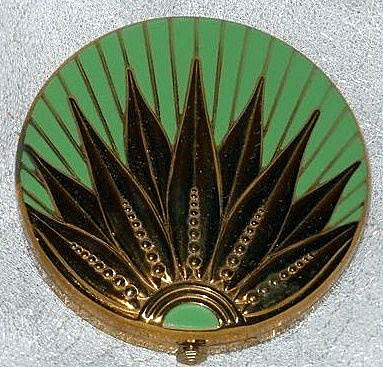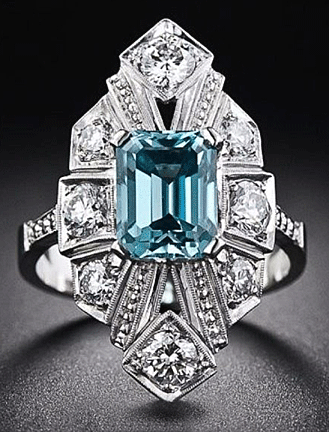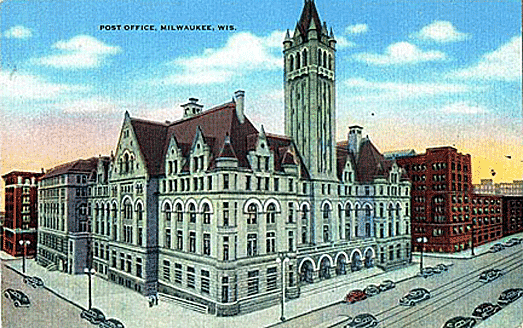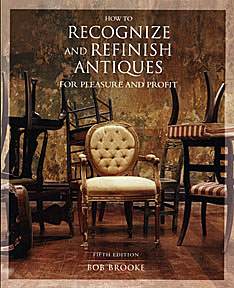|
| |
|
Collecting the American Dream
by Bob Brooke
 Through
the 1920s and 1930s, America was in a state of chaotic confusion. The
highs of the early 1920s came crashing down on that fateful day in 1929
when it seemed the rug had been pulled from under everyone. It took a
long while to recover, but during the 1930s, the country saw the light
at the end of the tunnel—at least they thought they did. Then came World
War II. Through
the 1920s and 1930s, America was in a state of chaotic confusion. The
highs of the early 1920s came crashing down on that fateful day in 1929
when it seemed the rug had been pulled from under everyone. It took a
long while to recover, but during the 1930s, the country saw the light
at the end of the tunnel—at least they thought they did. Then came World
War II.
During this time, politics inescapably influenced art and design. It was
a time of great social and artistic upheaval. The catastrophic effect of
two world wars profoundly affected art and design and people’s reaction
to them. While Modernism and Art Deco were a reaction to the horrors of
the First World War, artists and designers later responded to the end of
World War II with fear and suspicion brought on by the Cold War tensions
between East and West.
 Art
Deco appeared as an international design and art movement in the 1920s
and 1930s. Influenced by such varied sources as the Cubist paintings of
Georges Braques and Pablo Picasso, Mayan ruins in the Yucatan, the
discovery of King Tut’s tomb, and the architectural style of the Bauhaus
School in Germany, The Art Deco style was a rejection of the organic,
naturalistic sensibility of Art Nouveau. Avant-garde artists and
designers dreamed of a new world order free from history and tradition. Art
Deco appeared as an international design and art movement in the 1920s
and 1930s. Influenced by such varied sources as the Cubist paintings of
Georges Braques and Pablo Picasso, Mayan ruins in the Yucatan, the
discovery of King Tut’s tomb, and the architectural style of the Bauhaus
School in Germany, The Art Deco style was a rejection of the organic,
naturalistic sensibility of Art Nouveau. Avant-garde artists and
designers dreamed of a new world order free from history and tradition.
Art Deco was a machine-made aesthetic for a fast-paced industrial age,
using symmetry and line to bring order to the natural world and suggest
movement in objects as inert as chairs and bookends. Even the cinema
echoed and inspired the trend, most famously in Fritz Lang’s 1927 vision
of dystopia, “Metropolis.”
 For
a time, no object escaped the streamline touch of Art Deco. Frank Lloyd
Wright filled his geometric buildings with equally angular lamps,
tables, and stained-glass windows. Indeed, Art Deco architecture is
perhaps the most enduring legacy of the style. For
a time, no object escaped the streamline touch of Art Deco. Frank Lloyd
Wright filled his geometric buildings with equally angular lamps,
tables, and stained-glass windows. Indeed, Art Deco architecture is
perhaps the most enduring legacy of the style.
The 1930 Chrysler Building, an Art Deco masterpiece, is one of the most
famous landmarks in Manhattan while the 1937 Golden Gate Bridge in San
Francisco triumphed on the country’s western shore. Then there’s Ocean
Drive in the South Beach section of Miami, home to some 800 preserved
Art Deco structures. Inside all those Art Deco buildings was furniture
by the likes of Emile-Jacques Ruhlmann, who equipped his armchairs with
assertive, mesa-flat armrests. Elsewhere in modernist houses, a host of
decorative and functional objects set an elegant tone.
 Because
of mass production, many early 20th-century objects survive today,
making them fine and often surprisingly affordable collectibles.
Industrial designers Raymond Loewy and Henry Dreyfus created many
functional objects, such as clocks, radios, and telephones, with the
classic Art Deco angular, streamlined look. Manufacturers produced
statuettes and figurines, frequently of female nudes, in plastic,
bronze, and ceramic. Glass objects from vases to perfume bottles were
also popular, with René Lalique, Antonin Daum, Henri Navarre, and
Maurice Marinot among the most prized designers. Because
of mass production, many early 20th-century objects survive today,
making them fine and often surprisingly affordable collectibles.
Industrial designers Raymond Loewy and Henry Dreyfus created many
functional objects, such as clocks, radios, and telephones, with the
classic Art Deco angular, streamlined look. Manufacturers produced
statuettes and figurines, frequently of female nudes, in plastic,
bronze, and ceramic. Glass objects from vases to perfume bottles were
also popular, with René Lalique, Antonin Daum, Henri Navarre, and
Maurice Marinot among the most prized designers.
 Porcelain
figurines created for Robj, Rosenthal, and Lenci often depicted
characters and caricatures dressed in the fabrics of the day, with Art
Deco costume jewelry on their necks and Art Deco watches on their
wrists. By the bed would be a bronze and mahogany clock, in the dining
room a china service emblazoned with geometric patterns, and in the
living room silver and enamel cigarette cases leaning against ashtrays
made of Bakelite. Porcelain
figurines created for Robj, Rosenthal, and Lenci often depicted
characters and caricatures dressed in the fabrics of the day, with Art
Deco costume jewelry on their necks and Art Deco watches on their
wrists. By the bed would be a bronze and mahogany clock, in the dining
room a china service emblazoned with geometric patterns, and in the
living room silver and enamel cigarette cases leaning against ashtrays
made of Bakelite.
While Art Deco lasted for a fairly long time, by 1939 the movement had
run its course, giving way to World War II and what we now know as the
Mid-Century Modern style.
Scandinavian design also gained influence at this time, with a style
characterized by simplicity, democratic design and natural shapes.
Glassware by Iittala and ceramics by Arabia, both of Finland, tableware
by Georg Jensen and lighting by Poul Henningsen, both of Denmark, and
Danish Modern furniture were some of the most well known names. In
America, east of the Mississippi, the American-born Russel Wright,
designing for Steubenville Pottery, and Hungarian-born Eva Zeisel
designing for Red Wing Pottery and later Hall China created free-flowing
ceramic designs that were much admired and heralded in the trend of
smooth, flowing contours in dinnerware.
 Graphic
design documented mid-century transformations in urban development,
architecture and design include Linen Type postcards from the 1930s to
the early 1950s. These consisted primarily of national view-cards of
North American cities, towns, buildings, monuments and civil and
military infrastructures. Mid-century Linen Type postcards came about
through innovations pioneered through the use of offset lithography.
Publishers produced them on paper with a high rag content, which gave
the postcard a fabric type look and feel. At the time this was a less
expensive process. Along with advances in printing technique, Linen Type
cards allowed for very vibrant ink colors. The encyclopedic geographic
iconography of mid-century Linen Type images suggests popular middle
class attitudes about nature, wilderness, technology, mobility and the
city during the mid-20th century. Graphic
design documented mid-century transformations in urban development,
architecture and design include Linen Type postcards from the 1930s to
the early 1950s. These consisted primarily of national view-cards of
North American cities, towns, buildings, monuments and civil and
military infrastructures. Mid-century Linen Type postcards came about
through innovations pioneered through the use of offset lithography.
Publishers produced them on paper with a high rag content, which gave
the postcard a fabric type look and feel. At the time this was a less
expensive process. Along with advances in printing technique, Linen Type
cards allowed for very vibrant ink colors. The encyclopedic geographic
iconography of mid-century Linen Type images suggests popular middle
class attitudes about nature, wilderness, technology, mobility and the
city during the mid-20th century.

Vintage 20th-century objects are above all most collectible for their
design, but they also have a strong tie to the culture of America at the
time. A collector can find all sorts of items from a few dollars to
thousands. It all depends on what holds his or her interest. But
whatever a beginning collector chooses to collect, the collection will
be vibrant and fun.
< Back to Collecting Archives
Next
Article >
|
|

|
|
FOLLOW MY WEEKLY BLOG
Antiques Q&A
JOIN MY COLLECTION
Antiques and More
on Facebook
LIKE MY FACEBOOK PAGE
The Antiques
Almanac on Facebook |
|
No antiques or collectibles
are sold on this site.
|
|
How to Recognize and
Refinish Antiques for Pleasure and Profit

Have
you ever bought an antique or collectible that was less than perfect and
needed some TLC? Bob's new book offers tips and step-by- step
instructions for simple maintenance and restoration of common antiques.
Read an
Excerpt
|
|

|
|
|
|
|
